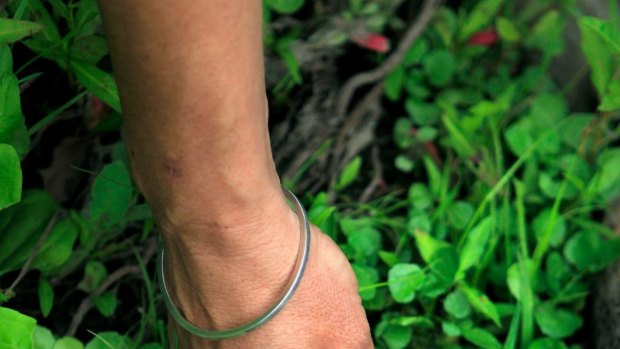By Lee Tulloch

Edible plants are more common in the confines of cities than you might imagine.Credit: Eddie Jim
When I was a child growing up in the suburbs, where most of our shopping was done at the supermarket, I remember our Sunday drives and how odd it was to see people foraging by the roadside for edible plants.
Our smart "new Australians" knew that roadside fennel, wild garlic and other greens were not only free but delicious. They were way ahead of their time – foraging for wild plants is such a thing that many restaurants now proudly work their menus around what once amounted to weeds.
I'm all in favour of foraging. Why not use the bounty nature gives us? Especially when it's languishing somewhere you walk past every day.
I was in Cape Town a few weeks ago, foraging around the foreshore with Jocelyn Myers-Adams, the executive chef of the Table Bay Hotel, who regularly incorporates foraged ingredients in her menus for the hotel. When I'd agreed to come on a foraging expedition, I'd imagined that we'd have to go away from the city and into the bush to find plants that were suitable for eating.
But, there we were, alongside the path where joggers run, scrounging around in parkland, looking for figs. Jocelyn plucked at a mass of succulent groundcover and pulled out a bud. Inside the bud was a dark, red fig, which she collected in a basket and, later in her kitchen, sauteed and used as an accompaniment to pork belly.
I've known this plant all my life as "pigface" (carpobrotus) and it happens to grow all over the nature strip across the road from my house. I've so far resisted the temptation to raid it but the next time I'm cooking a Sunday roast...
What was surprising about this foraging excursion was that we foraged in urban areas, near paths busy with pedestrians and roadsides choked with traffic. Charles Standing, a stunt rigger by trade who moonlights as an "urban hunter-gatherer" escorting foraging tours, came along to show us some favourite, hitherto-secret spots, including a grove of pines near one of the universities, where in the winter season he can gather 30-40 kilograms of porcini mushrooms in a day.
Those pines also produce pinenuts and Charles showed us how to extract them. Following a path behind the university, he found cape sweet pea, which is delicious in salads, and stinging nettle, which is good in stew or brewed as a tea. We crossed a main thoroughfare where a thicket of bushes grew by the road. It had a pretty white flower, but that's not all — the fruit was a red plum called num num, which is lovely and can cure constipation to boot.
By the sea, we pounced on some dune spinach springing up behind a wall, and rambling "sout slaii" or salt salad, growing along a path. Charles waded into the sea for some sea lettuce. Apart from fish and shellfish, the sea is also a source of giant sea snails. The regular garden snails, brought to South Africa by the French, are pretty good too, apparently.
The Western Cape of South Africa may have its own diverse plant kingdom but its climate is similar to ours and we share a number of the same plants. I hadn't really thought about all the potential of the ocean, which is almost at my doorstep – making a seaweed crust for fish or sauteeing sea lettuce with cream as a sauce over ravioli.
Back in the kitchen of Camissa, the fine dining restaurant at the Table Bay Hotel, we donned aprons and watched Jocelyn create dishes featuring the plants we'd gathered. There was pork belly with green fig and pickled agave, num num, wild pea shoots and wild garlic flower. The sout slaii was tossed into a green salad with sea lettuce, dune spinach and english spinach. Seared tuna was served with wild kei apple salsa. Native buchu, Jocelyn's favourite, is available as an essential oil with great detox properties, and she used it to flavour aioli.
Dessert was vanilla ice-cream with a wonderful, sticky sauce made from pelargonium picked at the hotel's back door. I've got my eye on the neighbour's geraniums.
The point of foraging is to do it sustainably, to use ingredients that might otherwise be wasted. No rampaging through local parks destroying everything in your wake, thanks.
If you get a chance to go foraging with a hotel chef, do it.
The writer was a guest of the Table Bay Hotel.
Sign up for the Traveller Deals newsletter
Get exclusive travel deals delivered straight to your inbox. Sign up now.